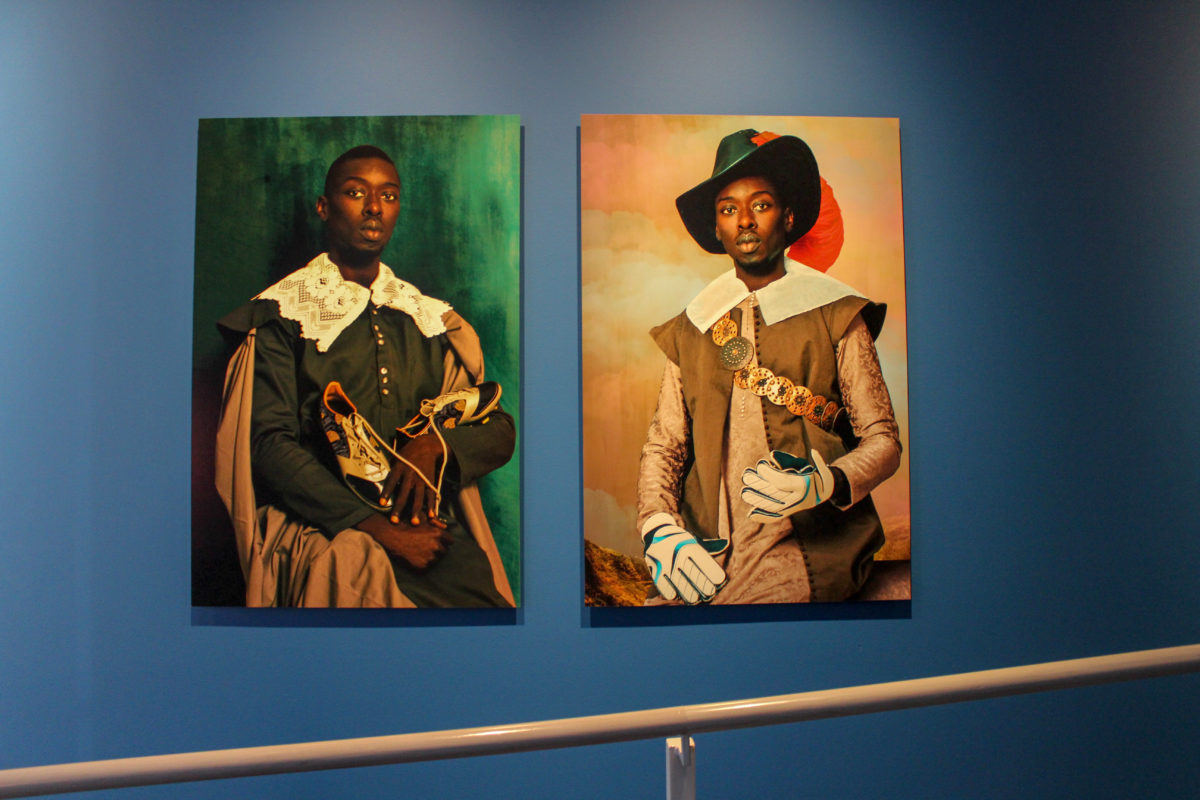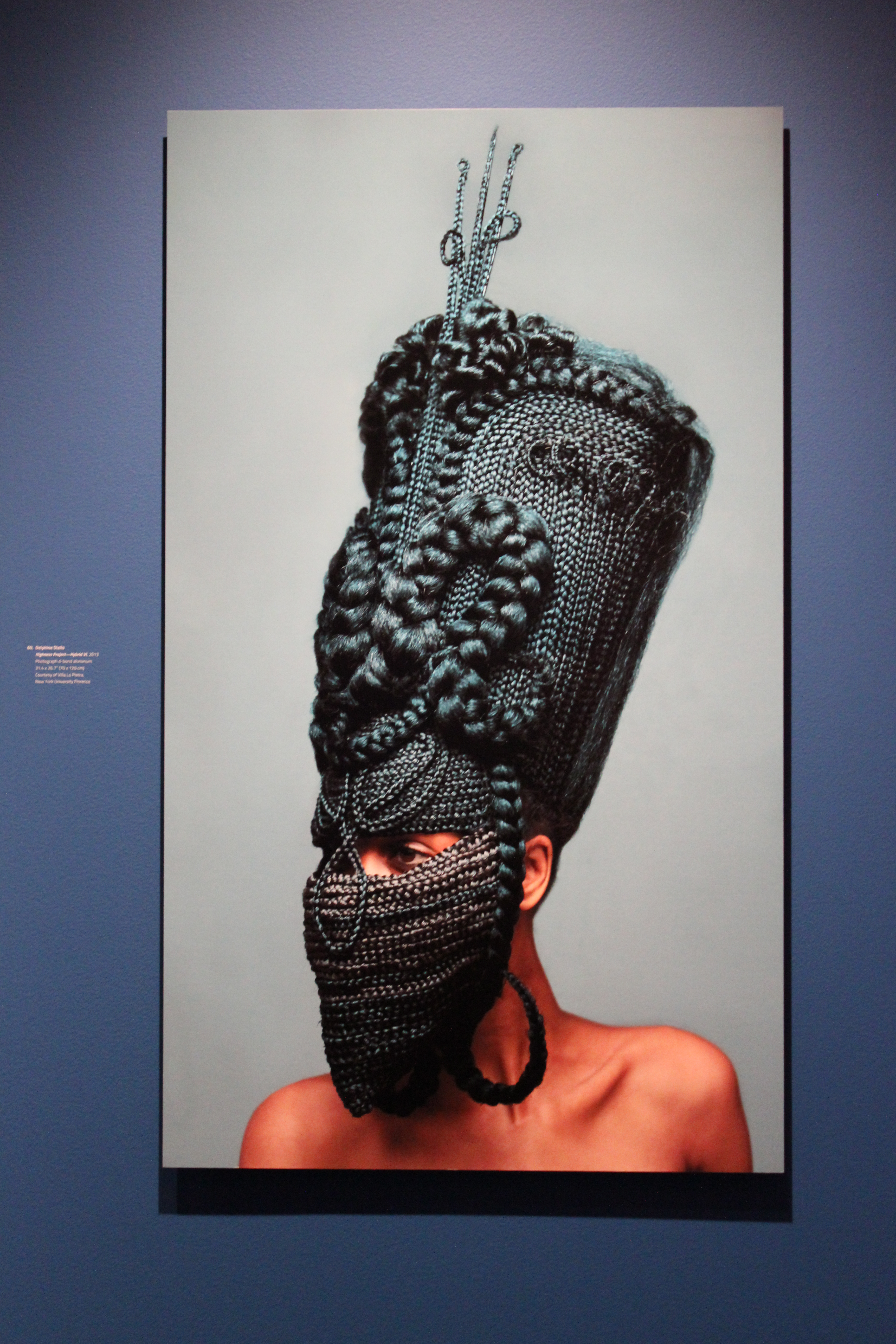
Through May 5, the Ethelbert Cooper Gallery of African & African American Art presents “ReSignifications,” a reimagined slice of a 2015 exhibit staged at New York University’s Villa La Pietra in Florence, Italy. Guest curator Awam Amkpa has whittled down the most poignant pieces of work, which completely overhaul the depiction of black bodies over time.
Large-scale photographs of ornate wooden statues ground the exhibit in the history of the “blackamoor” figure. The European style emerged in the 18th century featuring highly stylized depictions of African males in subservient and minstrel-like positions. From these types of images springs the work of the contemporary artists throughout the exhibit, responding to and counteracting the colonial artworks.
In the opening hallway of the space hang two photographs by Omar Victor Diop featuring the artist dressed in the garb of the 17th-century upper class. These images, as well as several others throughout the show, are from Diop’s “Diaspora” self-portrait series. In the series, he dresses as successful African figures who have been written out of the historical narrative. In the Cooper exhibit images, he portrays Juan de Pareja, a Spanish painter and assistant to the famous Velasquez, and Don Miguel de Castro, an ambassador of the Congo sent to the Netherlands to resolve conflict.
 At the same time as the grotesquely overwrought blackamoor statues and paintings were being produced, Africans were achieving spectacular goals like those Diop depicts. In each photograph, which recreates an original painting of the historical figure, the artist incorporates a contemporary sports item. Juan de Pareja holds shiny new cleats; Don Miguel de Castro wears crisp, white athletic gloves. In this way, Diop is not only exposing the other side of the historical coin, but also drawing parallels between successful black figures then and now, and the difficulties both parties face.
At the same time as the grotesquely overwrought blackamoor statues and paintings were being produced, Africans were achieving spectacular goals like those Diop depicts. In each photograph, which recreates an original painting of the historical figure, the artist incorporates a contemporary sports item. Juan de Pareja holds shiny new cleats; Don Miguel de Castro wears crisp, white athletic gloves. In this way, Diop is not only exposing the other side of the historical coin, but also drawing parallels between successful black figures then and now, and the difficulties both parties face.
At the opposite end of the exhibit, images from Delphine Diallo’s “Highness Project,” present black women as royalty. Using braids and hair structures, often a reason for the othering of black women, Diallo creates ornate crowns, masks and headpieces that elevate her subjects to otherworldly status. In her artist statement, Diallo says, “I treat my process as if it were an adventure liberating a new protagonist,” and here, her protagonist is African women.
Read the full article in The Bay State Banner.